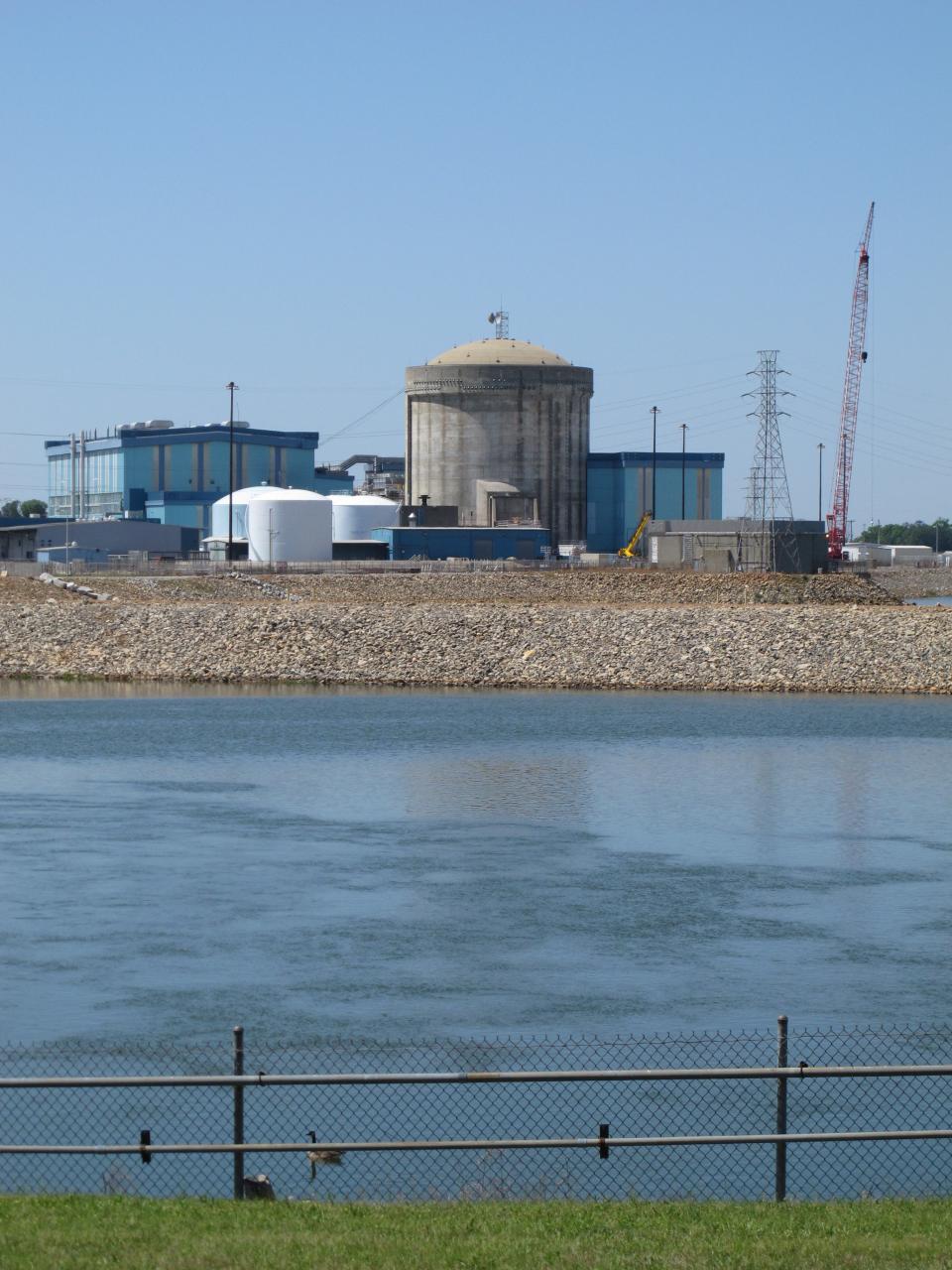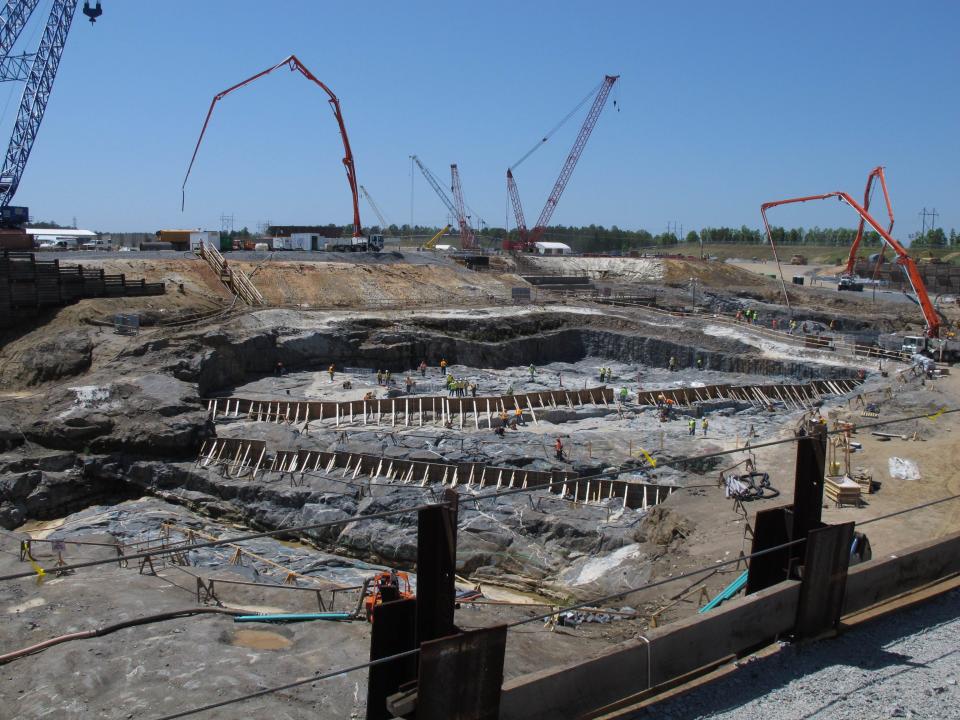SCE&G shows off site for 2 new nuclear reactors
JENKINSVILLE, S.C. (AP) — Now that federal regulators have approved licenses for two new nuclear reactors in South Carolina, work can begin to build the first nuclear power plants in the state in more than 25 years.
Officials with Scana Corp.'s South Carolina Electric & Gas and the state-owned utility Santee Cooper threw a barbecue lunch party Monday for employees and construction workers to celebrate last month's decision to grant licenses to build and operate the new reactors at the V.C. Summer Nuclear Station near Jenkinsville. Reporters received a tour of the construction work already taking place.
Several cranes dot the site, and a 40-foot deep hole already has been dug for one of the new reactors. Not far away, rows of giant breakers are awaiting instillation near the spot where the power from the plant will go to be transmitted to more than half of South Carolina's 4.6 million people.
SCE&G and Santee Cooper will jointly operate the $10 billion reactors. SCE&G is paying for 55 percent of it and will get that much of the power, while Santee Cooper has a 45 percent stake. The first reactor is scheduled to start generating power in 2017, with the second one coming online in 2018. The plant will hire 3,000 construction workers, and the new reactors should bring 600 to 800 permanent jobs when they are operating.
The reactors are the first to be built in South Carolina in more than 25 years, and once they are both built, will give the state nine operating nuclear plants.
SCANA said the two new nuclear plants will mean 60 percent of the utility's power will be generated by plants that do not produce carbon emissions, allowing the company to shutter some of its older, more polluting coal and natural gas plants.
"It's about having a balanced portfolio," said Kevin Marsh, president and CEO of SCANA. "You don't want to be all gas, all nuclear or all coal."
The new plants do have detractors. The vote to grant the licenses to SCANA was 4-1, with Nuclear Regulatory Commission Chairman Gregory Jaczko offering the lone vote against.
Jaczko wanted licenses to require all safety improvements presently being developed by the NRC staff based on what was learned in the nuclear accident at Fukushima, Japan, last year. Unless the requirements were tied to the licenses, he worried that utilities would wait to implement the safety measures to save time or prevent delays.
"We have seen this time and again, most notably with fire protection, and should not allow that to happen here," Jaczko said.
The reactor design could also be more susceptible to major earthquakes, said Tom Clements of the Alliance for Nuclear Accountability in Columbia.
Jeff Archie, chief nuclear officer for SCE&G said workers at the plant consider safety the most important concern and the utility has promised to implement any safety measures that come from the review of the problems in Japan.
"We will follow through the requirements the commission has us do related to Fukushima," Archie said.
The plants were first proposed nearly a decade ago, when the economy and South Carolina's population were rapidly expanding. SCE&G customers have been paying for the new reactors since 2007 under a state law that allows it to collect money to finance the project before it generates power.
Some critics said SCE&G and Santee Cooper could save money by building smaller plants powered by either natural gas or biofuel, like methane from landfills or burning of scrap wood.
Santee Cooper President and CEO Lonnie Carter said nuclear power allows utilities to charge constant rates because the costs of materials stays much more stable than natural gas, which can go through volatile price swings. He said biomass is a good, clean way to generate power, but can't make enough electricity to meet rising demands.
"Industry is going to begin looking for people who have a bigger nuclear capacity in their generation mix," Carter said.




